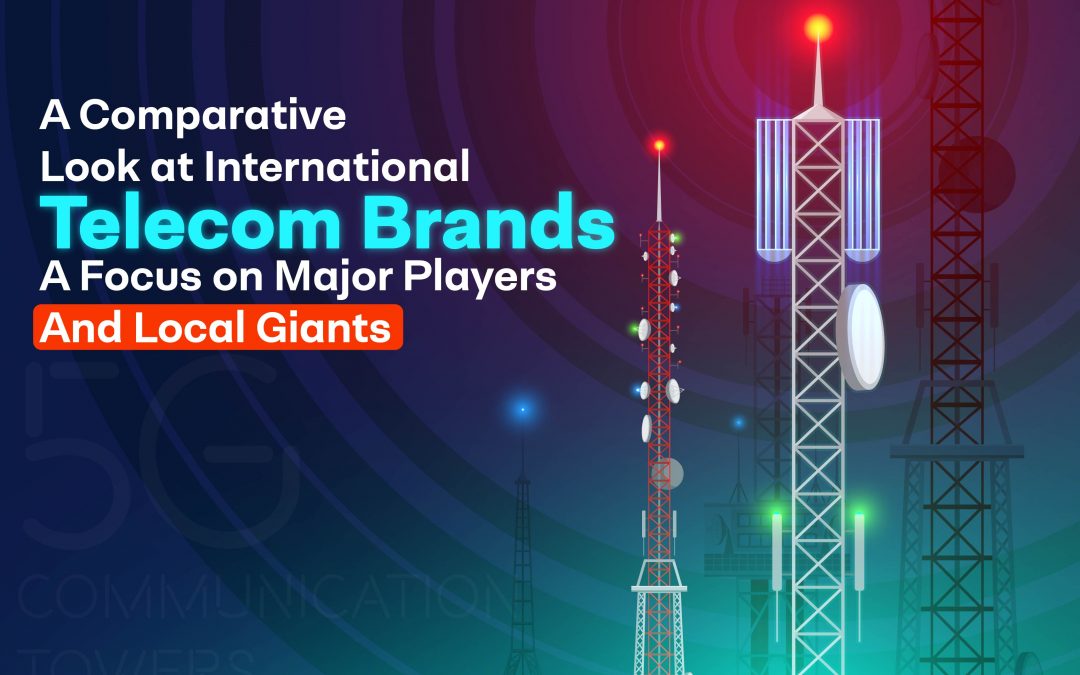In the vast world of telecommunications, various international brands dominate the global market, each catering to specific regional needs and preferences telecom Brands. This blog provides an in-depth comparison of key telecom providers in different countries, including the US, UK, Australia, Singapore, and India. We’ll also spotlight local brands that play a significant role in their respective markets.
1. Overview of International Telecom Brands
Telecommunications companies operate on a global scale, offering a range of services from mobile and fixed-line communication to broadband and digital solutions. Let’s explore how major international brands and local players compare across different countries.
2. Major International Telecom Providers
a. United States
- Verizon: As one of the top telecom companies in the USA, Verizon is renowned for its extensive 4G LTE network and rapidly expanding 5G capabilities. The company offers a range of services including wireless, broadband, and television. Notably, Verizon’s network infrastructure supports several other cell phone companies. For instance, some regional carriers and MVNOs (Mobile Virtual Network Operators) utilize Verizon towers to provide their services.
- AT&T: Another major player in the US, AT&T provides a comprehensive suite of communication services. Known for its robust 5G network, AT&T is also a key player in media and entertainment through its various acquisitions.
b. United Kingdom
- Vodafone: A leading international telecom brand, Vodafone has a significant presence in the UK. The company is noted for its strong global network, extensive mobile services, and investments in 5G technology. Vodafone stands out among communication companies for its innovative approach and extensive international footprint.
c. Australia
- Telstra Australia: As the largest telecommunications and media company in Australia, Telstra offers a wide array of services including mobile, broadband, and digital TV. The company is at the forefront of 5G deployment in the region and is a prominent telecom company in the Australian market.
d. Germany
- Deutsche Telekom: A major European player, Deutsche Telekom operates globally with a strong focus on mobile and fixed-line services. The company’s T-Mobile brand is well-recognized in multiple countries for its extensive 5G network and innovative solutions. For those accessing Deutsche Telekom’s services, the Telekom login is essential for managing accounts and services.
e. Singapore
- Singtel: Singapore Telecommunications Limited (Singtel) is a leading provider in Singapore and the Asia-Pacific region. The company offers comprehensive telecommunications services, including mobile, broadband, and digital solutions, and is a significant player among telecommunications providers in the region.
3. Local Telecom Brands and Their Impact
a. India
- Bharti Airtel: One of India’s leading telecom providers, Bharti Airtel offers extensive mobile and broadband services. The company is known for its innovative data plans and wide network coverage, making it a key player in the Indian telecom market.
- Reliance Jio: A major disruptor in the Indian market, Reliance Jio revolutionized telecommunications in India with its affordable data plans and widespread 4G network. The company continues to expand its 5G capabilities and is a significant force among local telecom companies.
b. United Kingdom
- BT Group: British Telecommunications (BT) is a prominent local player in the UK, offering a range of services from broadband to fixed-line and mobile communications. BT Group is a significant name among communication companies in the UK.
c. Australia
- Optus: A major competitor to Telstra, Optus provides mobile and broadband services across Australia. Known for its competitive pricing and customer service, Optus is a key player in the Australian Telecom Brands.
d. Singapore
- StarHub: Another significant telecom provider in Singapore, StarHub offers mobile, broadband, and cable TV services. The company is recognized for its customer-centric approach and innovative service offerings.
4. Key Trends and Market Dynamics
a. Expansion of 5G Networks
Telecom providers globally are focusing on the expansion of 5G networks. Companies like Verizon, Deutsche Telekom, and Telstra are leading the charge, investing heavily in infrastructure to offer faster speeds and enhanced connectivity.
b. Integration of Digital Services
Telecommunications companies are increasingly integrating digital services into their portfolios. This includes cloud computing, IoT (Internet of Things), and cybersecurity solutions, providing a more comprehensive service offering to their customers.
c. Regional Variations and Challenges
Different regions face unique challenges and opportunities. For instance, regulatory environments, market maturity, and consumer preferences can vary significantly, influencing how telecom providers operate and compete.
d. Consolidation and Strategic Alliances
The telecom industry is witnessing a trend toward consolidation, with mergers and strategic alliances reshaping the competitive landscape. This consolidation often aims to achieve economies of scale, enhance service offerings, and expand market reach.
5. Conclusion
The global telecom industry is characterized by a diverse range of players, each contributing to the ever-evolving landscape of communication. From international giants like Vodafone and Deutsche Telekom to influential local brands such as Bharti Airtel and Telstra, understanding the dynamics of these providers is crucial for grasping the full scope of the Telecom Brands.
By analyzing these key players and their regional counterparts, stakeholders can gain valuable insights into global and local telecom trends, helping them navigate the complex world of telecommunications more effectively.












